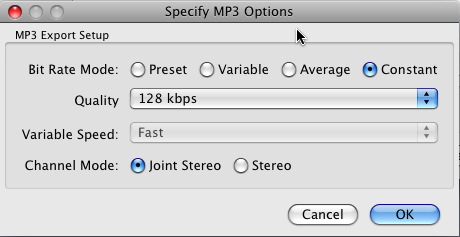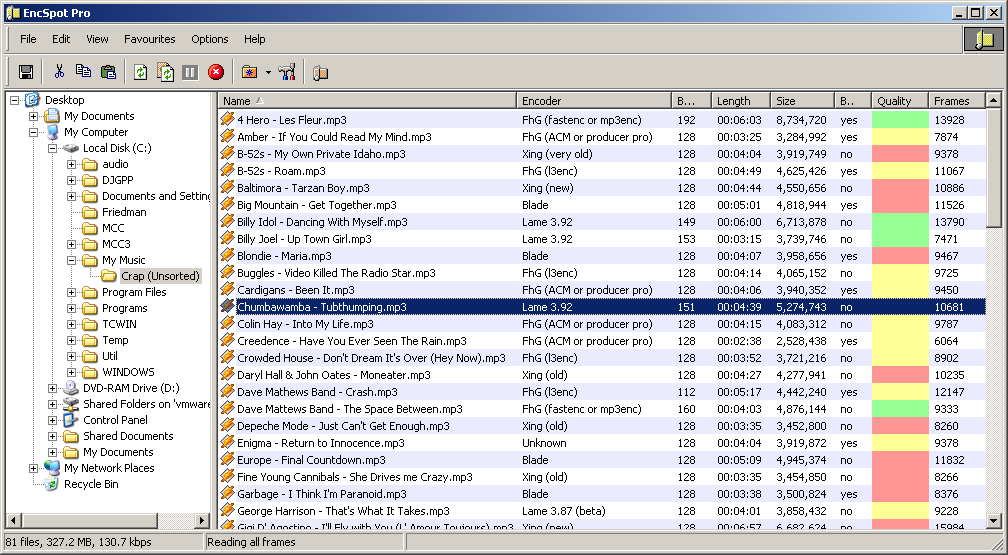

- #Export audio audacity joint stereo vs stereo how to
- #Export audio audacity joint stereo vs stereo series
- #Export audio audacity joint stereo vs stereo download
What does it mean to you?Īlthough a higher bitrate means higher quality, it also means larger file sizes. The lower the bitrate, the less data, the lower the quality. It’s measured in kilobits of data per second (kbps). Pick the Right Bitrate What is it?īitrate is the product of the bit depth and the sample rate, thus, the name bitrate. Listen to our audio file at 32000 Hz instead of 44100. To change the frequency of your audio recording in Audacity® click on the drop-down menu for Project Rate in the bottom left corner of the screen, then select a frequency. This little table gives you an idea of the quality you can expect from different frequencies. Frequency is how we measure how frequently the samples were taken: 10 kHz means 10,000 samples per second. Sample rate is the intervals between sound samples in recordings: the shorter the interval, the more samples. Just like analog and digital watches, the former gives a continuous stream of time, while the latter gives only seconds (or a fraction of a second, depending on the watch’s precision).īit depth is the amount of sound data recorded with each sample: the more depth, the more data. When it’s played we don’t hear the gaps in the recording.

Now recordings are digital which means only samples of sound are recorded at regular intervals. Reduce the Frequency What is it?īack when audio was recorded on vinyl albums, the recordings were analog, meaning a continuous stream of sound was recorded. I didn’t fade out this audio.įor this sample, the file size was brought down to half, again. Select the end tail, and go to the Effect menu to add a Fade Out effect. If you feel the sound cuts off abruptly, you didn’t necessarily cut off too much of the natural decay. The actual sound constitutes less than half the length of the recording. Our sample audio file has extra silence in the beginning and end. If your audio file contains unnecessary silence, then trim it out. Your new file will be around half the size of the original.

To begin, open your audio file in Audacity®.

If your audio is a voice-only recording, make it mono. When you convert it to a mono-sound file, you will have only one recording.įor many audio files, you won’t need stereo’s effect of feeling surrounded by the audio, nor stereo’s effect of the sound-source moving in the room around the listener. Stereo sound files contain two tracks: one for the right ear and another for the left ear. The quickest and most effective way to cut down your audio file size is to convert stereo recordings to mono recordings. Here is the original file without any edits. I downloaded a little sound clip from Dreamstime for you to listen for changes in the audio along the way.
#Export audio audacity joint stereo vs stereo download
You will also need to download the Lame MP3 encoder. You can download the installer from their webpage directly: Audacity Team.
#Export audio audacity joint stereo vs stereo how to
If you’re considering purchasing an audio editor, check out PCMag’s comprehensive comparisons and reviews: The Best Audio Editing Software of 2018.Īudacity® is by far the most popular free sound editor (and it’s open-source), which is why that’s the editor we’ll use when showing you how to optimize your audio files. In order to optimize your audio files, you’ll need an audio editor like Adobe Audition® or Audacity®. In case you missed the first two posts, check them out: How to Optimize Images for Your Ebook and How to Optimize Videos and Add Them to Your Ebook.įollow the 4 easy steps in this article to optimize your stand-alone audio files, as well as audio files in any videos you create. In this article, we’ll show you how to optimize audio files.
#Export audio audacity joint stereo vs stereo series
Welcome to the final post in a three-part series on optimizing media for your ebooks.


 0 kommentar(er)
0 kommentar(er)
